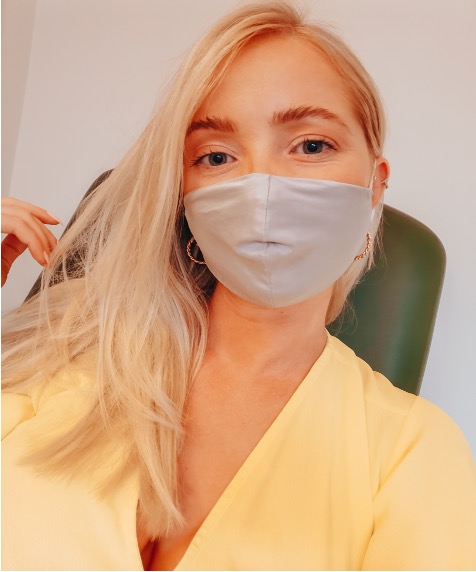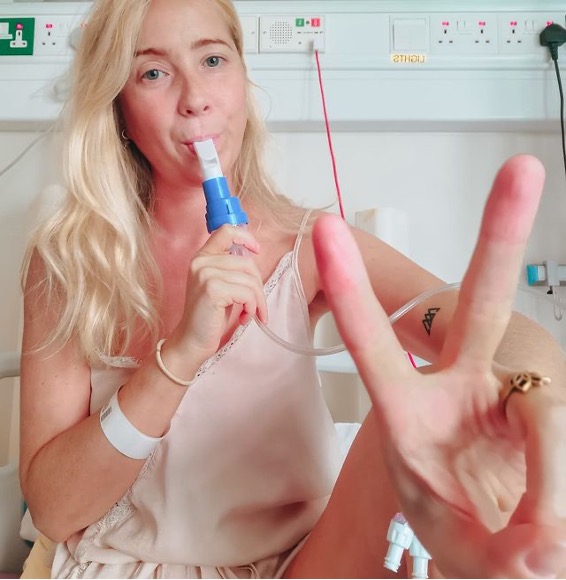Why People With CF Need to Know About HPV
– Written by Aoife P. R.
My Experience with HPV + Cervical Cancer
As some readers may know from my previous posts, I was diagnosed with Cervical Cancer at just 27 years of age. This was a total shock my family and I at the time, as having CF kind of gave me a false self of security, assuming I couldn’t possibly be diagnosed with anything worse in one lifetime!
Unfortunately, this was not the case. As a childless 27-year-old, I was forced to have a radical hysterectomy and 25 sessions of pelvic radiotherapy, leaving me wombless and menopausal.
Although what I endured was absolute hell on Earth, I learned some valuable lessons and facts on HPV, Cervical Cancer, and how my Cystic Fibrosis treatment was linked to it all.
I have been blessed with successful oncology treatment and another chance at life, so I feel it is both my honour and my duty to share these important facts with you all, in the hopes that none of you ever find yourselves in the position I did 3 years ago.

What is HPV?
HPV stands for human papillomavirus, which is a group of over 100 viruses. HPV is very common, so much so that most people will be infected with a form of HPV in their lifetime.
You can contract HPV by being sexually active with another person who already has it. It is contracted from genital skin contact, so wearing a condom will not protect you from HPV. HPV can be transferred even when an infected person has no signs or symptoms of the virus.
Anyone that is sexually active can get HPV, even if you have had sex with only one person. It is also possible to develop symptoms years after you have sex with someone who is infected, making it difficult to know when you first became infected. You may also have no signs or symptoms. It is also possible for a mother to pass HPV to her baby during birth, but this is very rare.
The average person usually clears HPV themselves, as the immune system detects it and expells it, so treatment for HPV is generally not needed. However, in some people, the HPV infection can develop, leading to cancer or genital warts.
Unfortunately, HPV causes 1 in 20 cancers worldwide and is one of the leading causes of cervical cancer. HPV also causes:
- 5 out of 10 vulval cancers
- 7 out of 10 vaginal cancers
- 9 out of 10 HPV-related anal cancers
- 9 out of 10 incidences of genital warts
- mouth and throat cancer (oropharynx)
- cancer of the anus (rectum)
- cancer of the penis
HPV and Cystic Fibrosis
Like many viral infections, HPV is generally cleared by the immune system. However, some individuals do not clear HPV. The virus often remains dormant in the body, in some cases, for many years.
13 high-risk HPV types have been identified. People infected with these ‘high risk’ HPV types and go untreated can damage the DNA in our cells. This can cause cells to divide and grow out of control which can lead to cancer.
Immunocompromised people are at increased risk of HPV-related disease, and therefore, are at a higher risk of developing HPV-related disease, i.e. Cancers.
Examples of immunocompromised cases are;
- Medical Treatments -long-term use of corticosteroids (often part of CF treatment), surpress the immune system so much so that they are unable to combat HPV when contracted, leaving it to create Cancer. Unfortunately, this is was the case for me.
- Transplant patients – anti-rejection medications given to transplant recipients suppress the immune system so that the body doesn’t reject the new organ. These medications are a double-edged sword as the immune system becomes very fragile from their use.
- Also Note: Autoimmune diseases -Rheumatoid Arthritis, Lupus, Type 1 Diabetes are also at risk of not clearing HPV.
This might all sound super scary, especially if you are currently in one of the above categories, but this knowledge is so powerful. If I had it a few years ago, I probably would not have had my world turned upside down at just 27 years of age.
Now that you have this knowledge, you can be proactive in protecting your future self. Keep reading to find out how!
The HPV Vaccine
The HPV vaccine now protects against 9 out of the 10 types of cancer-causing HPV.
The HPV vaccine has greatly reduced cases of pre-cancers of the cervix in young women in many countries including Australia, Sweden, the US, and the UK.
Since the HPV vaccine was licensed in 2006, research has been done all over the world showing the vaccine is safe and prevents cancer. The World Health Organization (WHO) also considers the HPV vaccine to be extremely safe.
HPV Screening
As of yet, there is no HPV screening available for males. The HPV vaccine is the best option for men to protect themselves from HPV-related cancers and genital warts.
All women between the ages of 25-65 should attend a cervical screening test (smear test) when it is due. Even if you have had the HPV vaccine, you should have a cervical screening test each time it’s due. This is because the HPV vaccine doesn’t give complete protection against cervical cancer.
Once your screening has taken place, your test sample will be checked for HPV. If HPV is detected, the sample will then be checked for abnormal cells.
If HPV is not found, your cells won’t need to be checked, as your risk of developing cell changes is very low.

Knowledge is Power
I hope you found this article helpful and not overly daunting! The goal here is not to scare-monger people into getting the HPV vaccine or worse, -becoming celebate!! (I joke!)
The goal is to spread this life-changing knowledge and to remind you to always listen to your body. So often we accept new aches or levels of fatigue as ‘our norm’ and assume they are due to a CF reason. But it’s important to flag these new issues with your CF team and have them followed up. And always remember; -your body tells you what is wrong with it, all you have to do is listen!
***
– Written by Aoife P. R.



